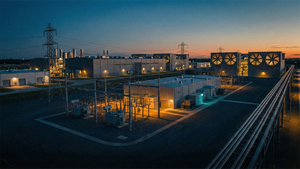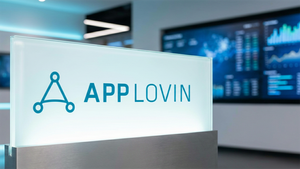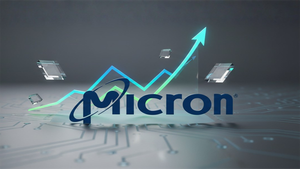
Biotech company Regeneron (NASDAQ: REGN) reported revenue ahead of Wall Street’s expectations in Q2 CY2025, with sales up 3.6% year on year to $3.68 billion. Its non-GAAP profit of $12.89 per share was 52.9% above analysts’ consensus estimates.
Is now the time to buy Regeneron? Find out by accessing our full research report, it’s free.
Regeneron (REGN) Q2 CY2025 Highlights:
- Revenue: $3.68 billion vs analyst estimates of $3.30 billion (3.6% year-on-year growth, 11.3% beat)
- Adjusted EPS: $12.89 vs analyst estimates of $8.43 (52.9% beat)
- Operating Margin: 29.4%, in line with the same quarter last year
- Free Cash Flow Margin: 25.2%, up from 4.9% in the same quarter last year
- Market Capitalization: $57.64 billion
"Regeneron had a strong quarter, marked by significant growth in U.S. sales of EYLEA HD and global sales of Dupixent and Libtayo along with multiple regulatory approvals," said Leonard S. Schleifer, M.D., Ph.D., Board co-Chair, President and Chief Executive Officer of Regeneron.
Company Overview
Founded by scientists who wanted to build a company where science could thrive, Regeneron Pharmaceuticals (NASDAQ: REGN) develops and commercializes medicines for serious diseases, with key products treating eye conditions, allergic diseases, cancer, and other disorders.
Revenue Growth
A company’s long-term sales performance can indicate its overall quality. Any business can put up a good quarter or two, but many enduring ones grow for years. Over the last five years, Regeneron grew its sales at a solid 14% compounded annual growth rate. Its growth beat the average healthcare company and shows its offerings resonate with customers.
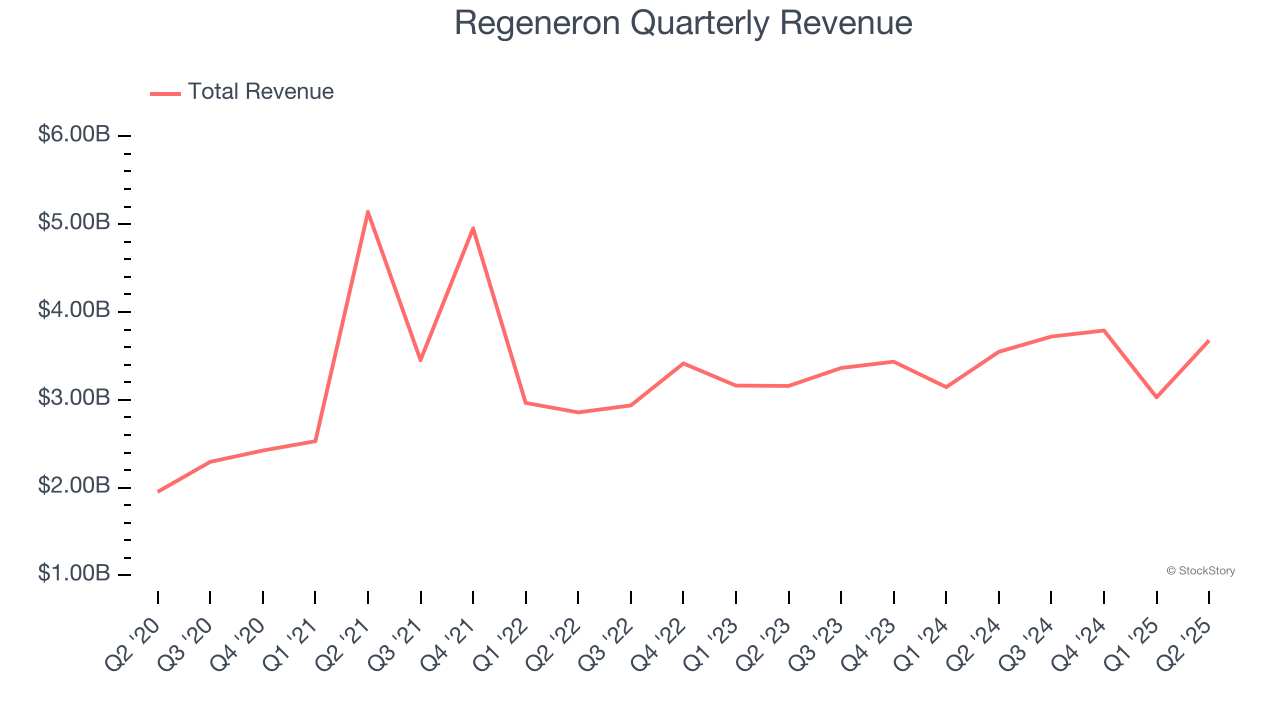
Long-term growth is the most important, but within healthcare, a half-decade historical view may miss new innovations or demand cycles. Regeneron’s recent performance shows its demand has slowed as its annualized revenue growth of 5.9% over the last two years was below its five-year trend. 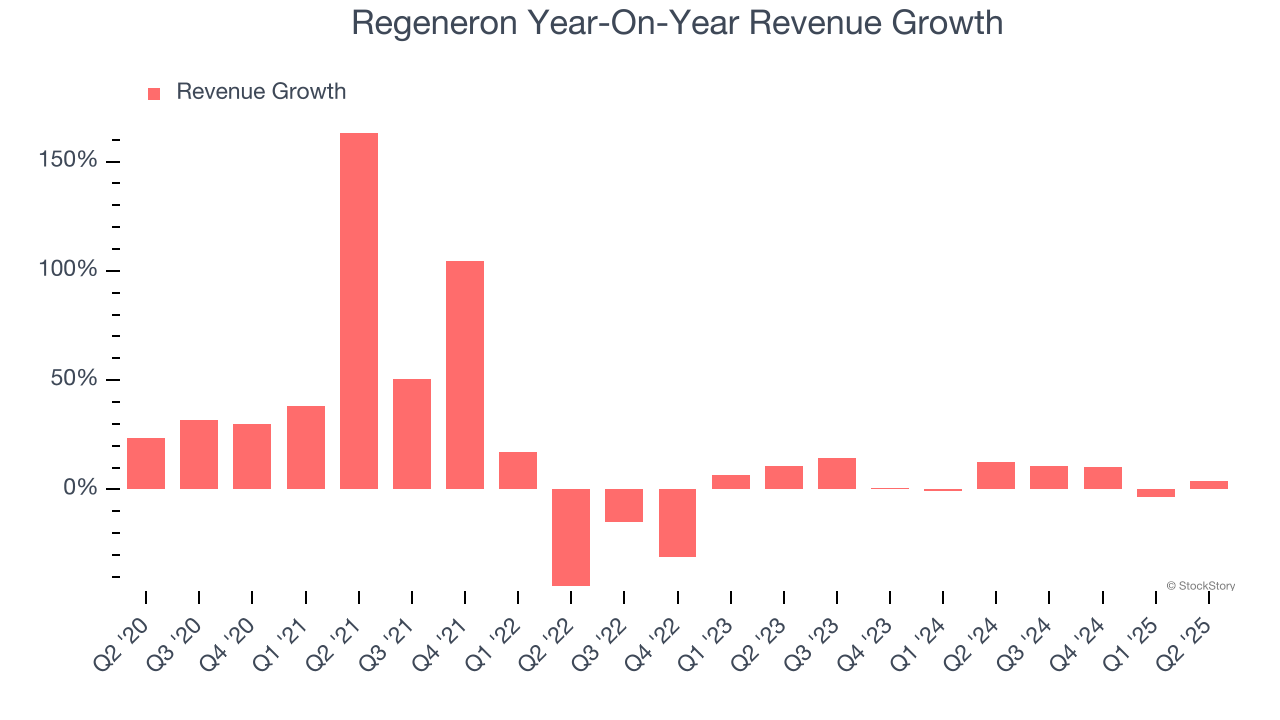
Regeneron also breaks out the revenue for its most important segments, Collaboration and Product & Pipeline, which are 50.6% and 44.4% of revenue. Over the last two years, Regeneron’s Collaboration revenue averaged 13.3% year-on-year growth while its Product & Pipeline revenue was flat. 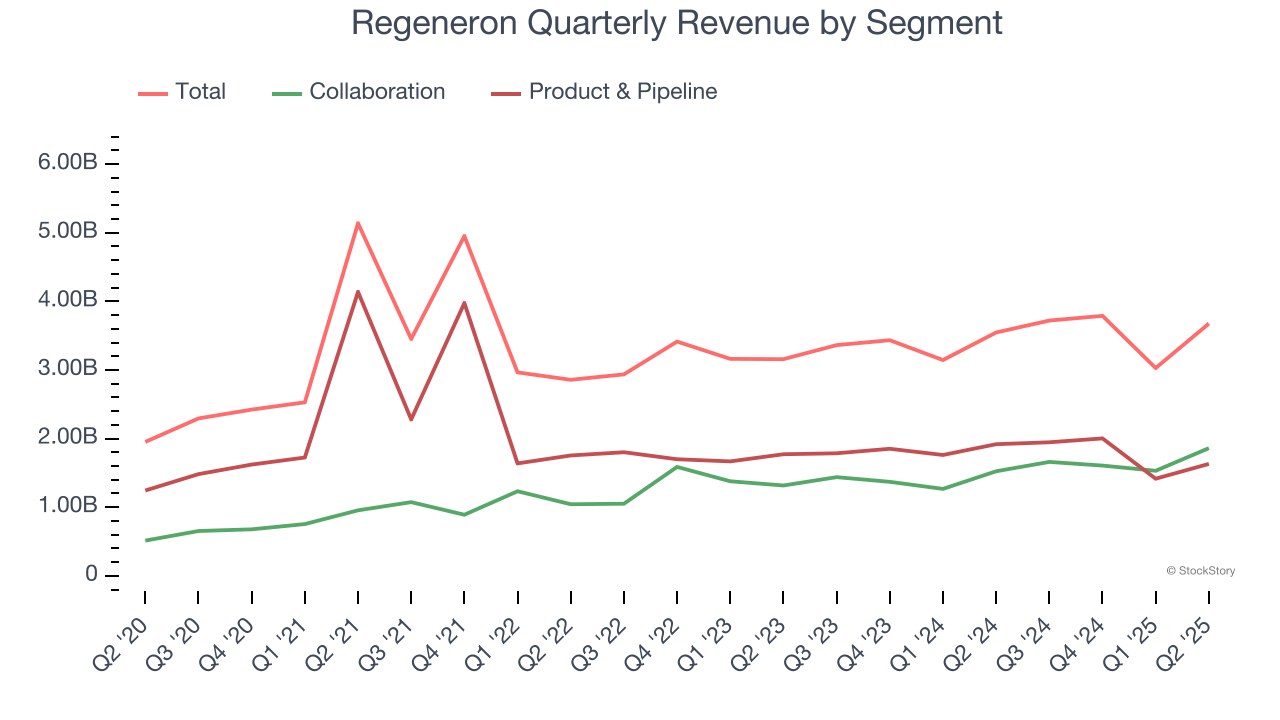
This quarter, Regeneron reported modest year-on-year revenue growth of 3.6% but beat Wall Street’s estimates by 11.3%.
Looking ahead, sell-side analysts expect revenue to decline by 3.3% over the next 12 months, a deceleration versus the last two years. This projection doesn't excite us and indicates its products and services will face some demand challenges.
Software is eating the world and there is virtually no industry left that has been untouched by it. That drives increasing demand for tools helping software developers do their jobs, whether it be monitoring critical cloud infrastructure, integrating audio and video functionality, or ensuring smooth content streaming. Click here to access a free report on our 3 favorite stocks to play this generational megatrend.
Operating Margin
Regeneron has been a well-oiled machine over the last five years. It demonstrated elite profitability for a healthcare business, boasting an average operating margin of 38.2%.
Looking at the trend in its profitability, Regeneron’s operating margin decreased by 26.9 percentage points over the last five years. The company’s two-year trajectory also shows it failed to get its profitability back to the peak as its margin fell by 7.2 percentage points. This performance was poor no matter how you look at it - it shows its expenses were rising and it couldn’t pass those costs onto its customers.
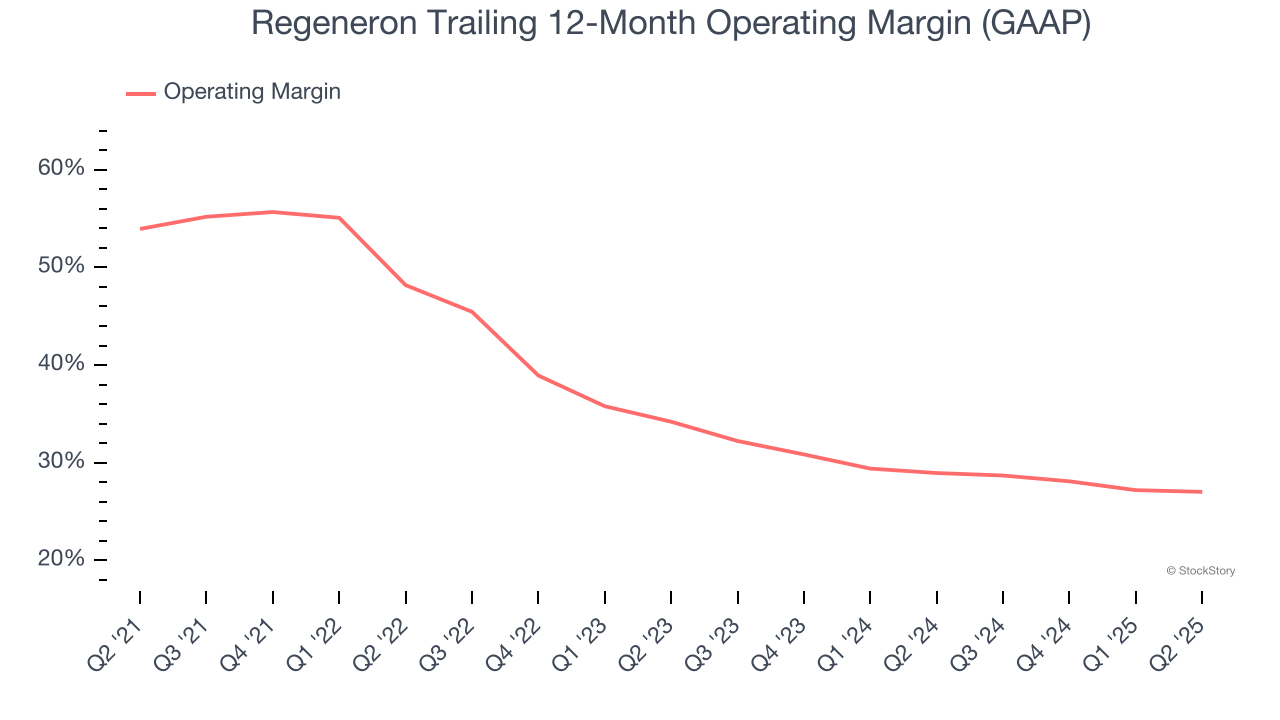
In Q2, Regeneron generated an operating margin profit margin of 29.4%, in line with the same quarter last year. This indicates the company’s overall cost structure has been relatively stable.
Earnings Per Share
We track the long-term change in earnings per share (EPS) for the same reason as long-term revenue growth. Compared to revenue, however, EPS highlights whether a company’s growth is profitable.
Regeneron’s EPS grew at a remarkable 10.3% compounded annual growth rate over the last five years. However, this performance was lower than its 14% annualized revenue growth, telling us the company became less profitable on a per-share basis as it expanded due to non-fundamental factors such as interest expenses and taxes.
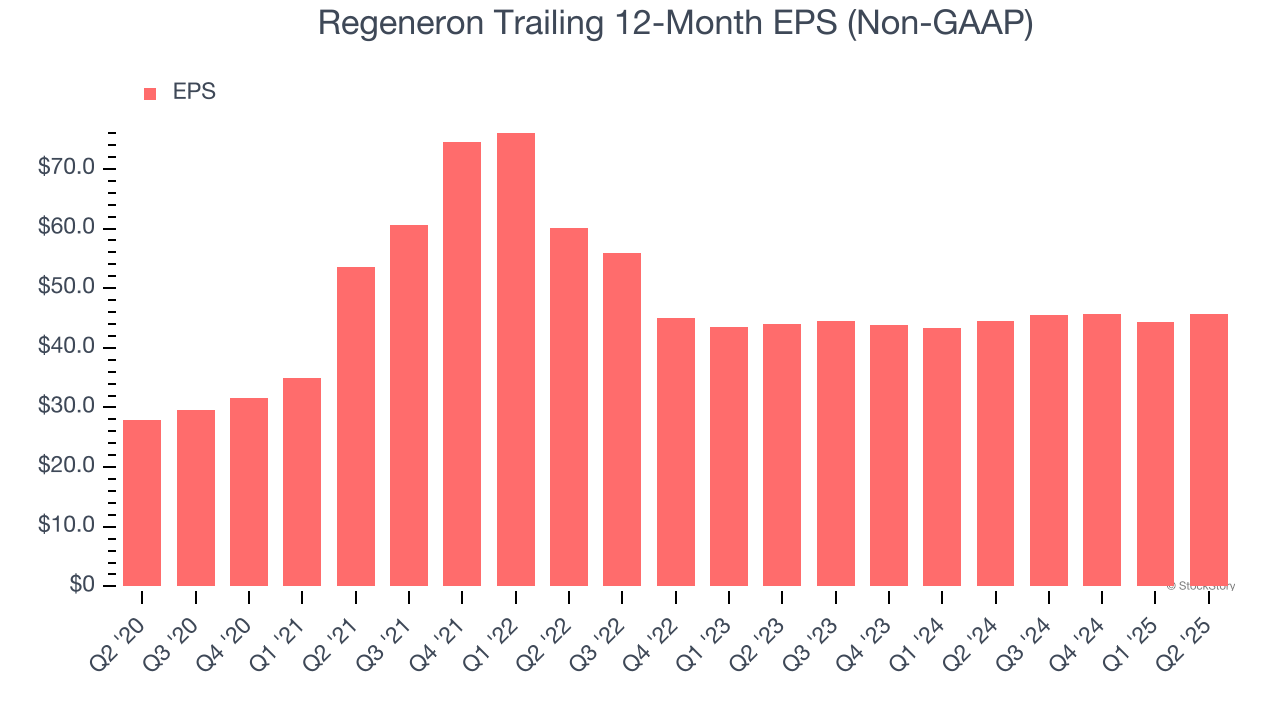
We can take a deeper look into Regeneron’s earnings quality to better understand the drivers of its performance. As we mentioned earlier, Regeneron’s operating margin was flat this quarter but declined by 26.9 percentage points over the last five years. This was the most relevant factor (aside from the revenue impact) behind its lower earnings; interest expenses and taxes can also affect EPS but don’t tell us as much about a company’s fundamentals.
In Q2, Regeneron reported adjusted EPS at $12.89, up from $11.56 in the same quarter last year. This print easily cleared analysts’ estimates, and shareholders should be content with the results. Over the next 12 months, Wall Street expects Regeneron’s full-year EPS of $45.64 to shrink by 20.5%.
Key Takeaways from Regeneron’s Q2 Results
We were impressed by how significantly Regeneron blew past analysts’ EPS expectations this quarter. We were also excited its revenue outperformed Wall Street’s estimates by a wide margin. Zooming out, we think this quarter featured some important positives. The stock remained flat at $550 immediately after reporting.
Regeneron had an encouraging quarter, but one earnings result doesn’t necessarily make the stock a buy. Let’s see if this is a good investment. The latest quarter does matter, but not nearly as much as longer-term fundamentals and valuation, when deciding if the stock is a buy. We cover that in our actionable full research report which you can read here, it’s free.
